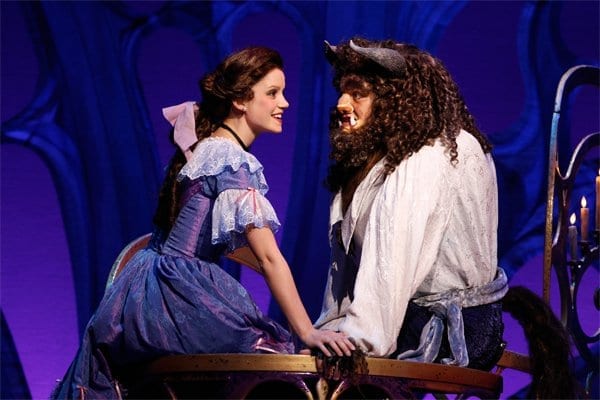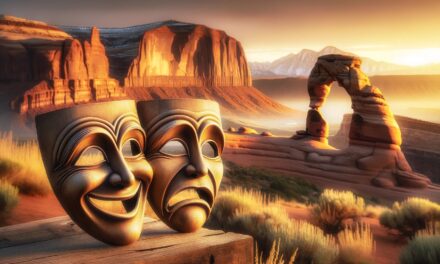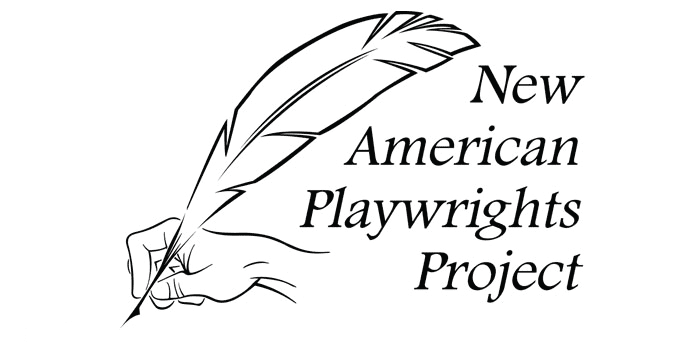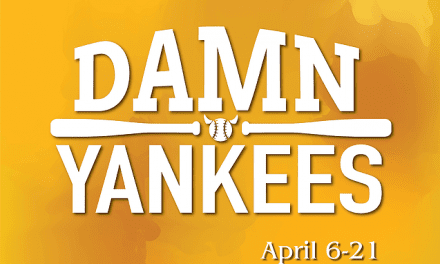SALT LAKE CITY — Every so often, Broadway sees a show that is not only a smash hit, but influences many musical productions for years afterwards. Famous musicals like Oklahoma!, Hair, and Company fall into this category. Running on Broadway for 14 years, Disney’s Beauty and the Beast certainly belongs with those, because without its success there would have never been The Lion King, Aida, Tarzan, or Mary Poppins. (You could also make the argument that other musicals based on movies like Hairspray and Legally Blonde may have been much less likely to be produced, too.) Based on the 1991 animated film of the same name, the national tour of the production visits Salt Lake City this week.
Director Rob Roth deserves kudos for translating an animated film (where there are no limits to what you physically can do) to the stage. Roth never strays far from the emotional core of the story, and in the most heart wrenching scenes—such as when Belle agrees to be the Beast’s prisoner in exchange for her father’s freedom—his deft directorial touch reminded me that this play isn’t just an adaptation of a cartoon. Rather, Roth’s play is an emotional story about love, loss, and the future. I also thought that Roth’s direction was best in the library scene, which makes the unlikely relationship between the two characters believable and touching. Although I generally liked Roth’s direction, I was put off by the many of the buffoonish gags (such as Maurice fiddling with his contraption), and the way that the characters directed much of their dialogue directly to the audience. Thankfully, these tendencies grew less common after the first 45 minutes.
Matt West’s choreography was fun to watch, with “Gaston,” “Beauty and the Beast,” and “Human Again” being the highlights of the show’s dance numbers. But even more quiet moments, like the title song, had me captivated as Belle smoothly glided across the stage in her sumptuous hoop skirt.
Emily Behny’s portrayal of Belle is truly enchanting (no pun intended). She lent a subtlety to the role that I had never seen in an actor playing Belle before. For example, when Gaston proposes to Belle, Behny had her character gradually realize all the implications that come with marrying Gaston, instead of just instantly recoiling at the idea. I was also impressed with how Behny owned so many of her songs. “Home,” for example, was more angry and hurt than I had ever heard it performed, but then Behny turned the final half of the song into a powerful anthem of determination. Finally, I have to compliment Behny for her performance during “Be Our Guest.” During the entire song, Behny’s character was excited at seeing all the magical wonders around her. Although she had certainly seen the dancing magical objects dozens of times before, Belle seemed to be encountering these things for the first time. I salute Behny for effectively acting like the familiar was new.
Dane Agostinis as the Beast was effective at inducing pathos in the audience and bringing depth to a character who has the potential to be flat and uninteresting. Even when he was acting bestial, Agostinis infused his character with humanity, which helped me relate to him better. For example, when he lashes out at Belle for entering the West Wing and almost touching the enchanted rose, Agostinis’ performance made it clear that the Beast was acting out of fear and self-protection (to make the curse prematurely permanent), and not because it was merely his nature to be a beast. This display of raw, human emotion made me believe that he had enough humanity left in him to form a real relationship. The secondary characters were aptly portrayed by this talented cast. Michael Haller played a dashing Lumiere who seemed to mourn the gradual loss of his humanity more than the other characters. I also enjoyed James May’s Cogsworth, whose constant anxiety provides some useful intercharacter conflict among the enchanted objects.
The only cast member with whom I was not completely pleased was Logan Denninghoff, who played Gaston. Denninghoff seemed to embrace too much of the slapstick comedy. Not only did this not provide a sufficient contrast with his sidekick Lefou (Andrew Kruep), but when Gaston was required to be truly menacing (as the townspeople stormed the castle), it was hard to believe that this clown could pose a real threat.
One reason to attend any production of Beauty and the Beast is the spectacle, which this production has in spades. The lighting (designed by Natasha Katz) was some of the best I’ve seen in months. Katz created spooky moments (such as when Maurice first encounters the Beast), stylized magical environments (“Be Our Guest”), and even nighttime mood lighting (“Beauty and the Beast”). The costumes (designed by Ann Hould-Ward) were faithful to the film for the main characters. Yet, Hould-Ward introduced unique designs for many of the secondary characters and chorus; these designs were whimsical, fun, and a pleasure to look at (especially Lumiere’s costume). On the other hand, I feel mixed about the set (designed by Stanley A. Meyer). The backdrops and the curtains were wonderful and enhanced the environment that the script created; however, I disliked some of the mobile set pieces, like the houses in the town and the pieces of the castle. These seemed flimsy and unappealing, given the lavish designs in the other visual elements.
Finally, the script and score for the stage version of Beauty and the Beast are some of the best in musical theatre. Linda Woolverton expanded her screenplay and added a great deal of character development for almost every major and secondary character in the show. One aspect of Woolverton’s script that I appreciate is the fact that the servants in the castle are gradually turning into objects, which raises the stakes that these supporting characters have in the relationship between Belle and the Beast. It also introduces an interesting psychological dimension of dealing with one’s humanity as it slips away, which the actors play beautifully. As for the score, one of the best film scores of all time (with music by Alan Menken and lyrics by Howard Ashman) has been amplified with additional songs by Menken and Tim Rice. The music and orchestrations are gorgeous and the addition of “Human Again,” “If I Can’t Love Her,” “Home,” “How Long Must This Go On?”, “If I Can’t Love Her,” and “A Change in Me” make this jewel of musical theatre shine even brighter. Thankfully, the cast of the national tour is able to fulfill the entire potential of the score. I loved how full and powerful the chorus numbers (e.g., “Belle,” “Gaston,” and “The Mob Song”) sounded, and I reveled in the emotion of many of the soloists.
Unquestionably, I enjoyed my afternoon with Belle, Lumiere, Cogsworth, Mrs. Potts, and other characters from my childhood. The NETworks tour of Beauty and the Beast will surely satisfy any theatre goer, whether they hunger for talented singing and dancing, spectacular live special effects, or an emotional story. This “tale as old as time” is a sure winner for Utah theatre goers of all ages.







